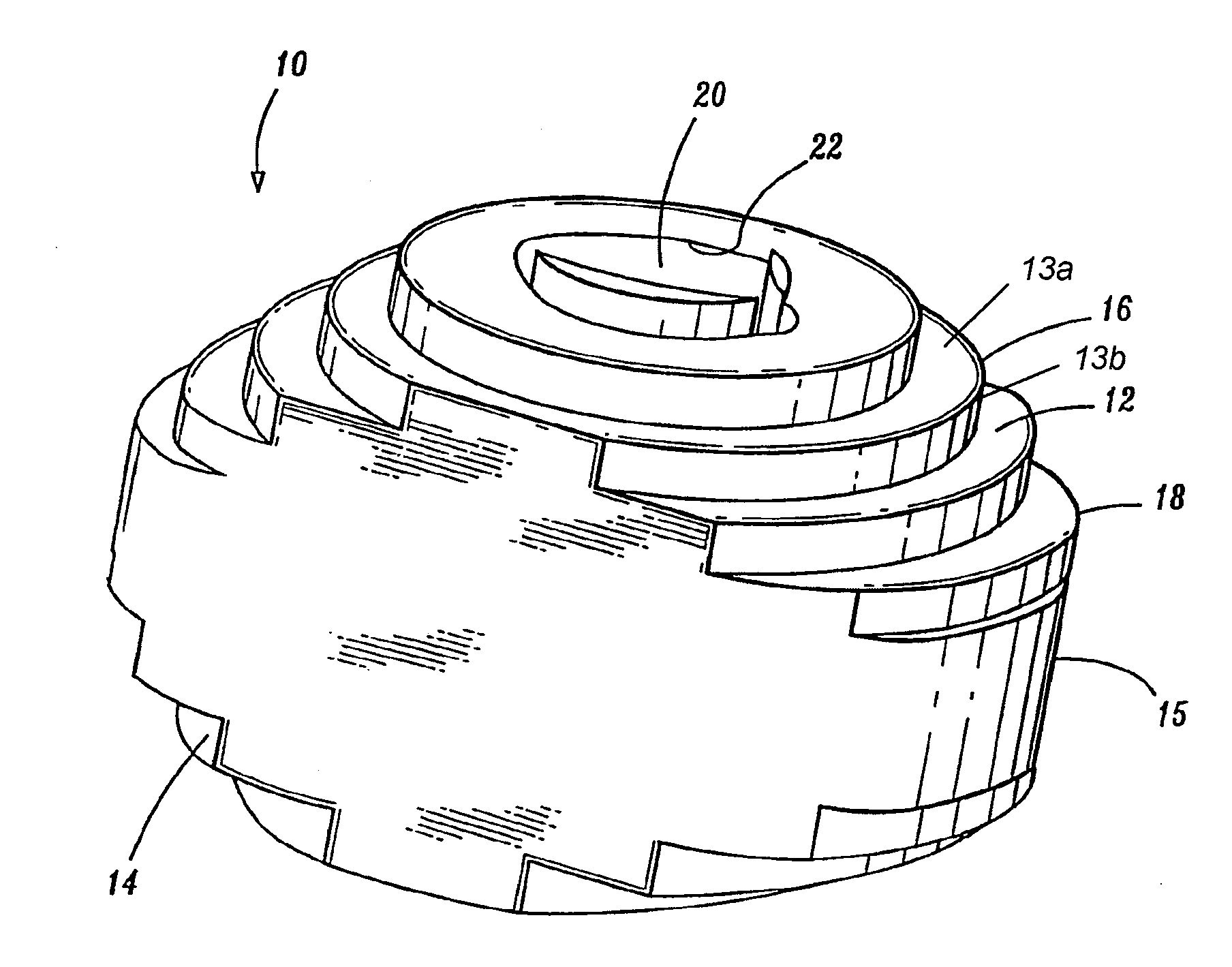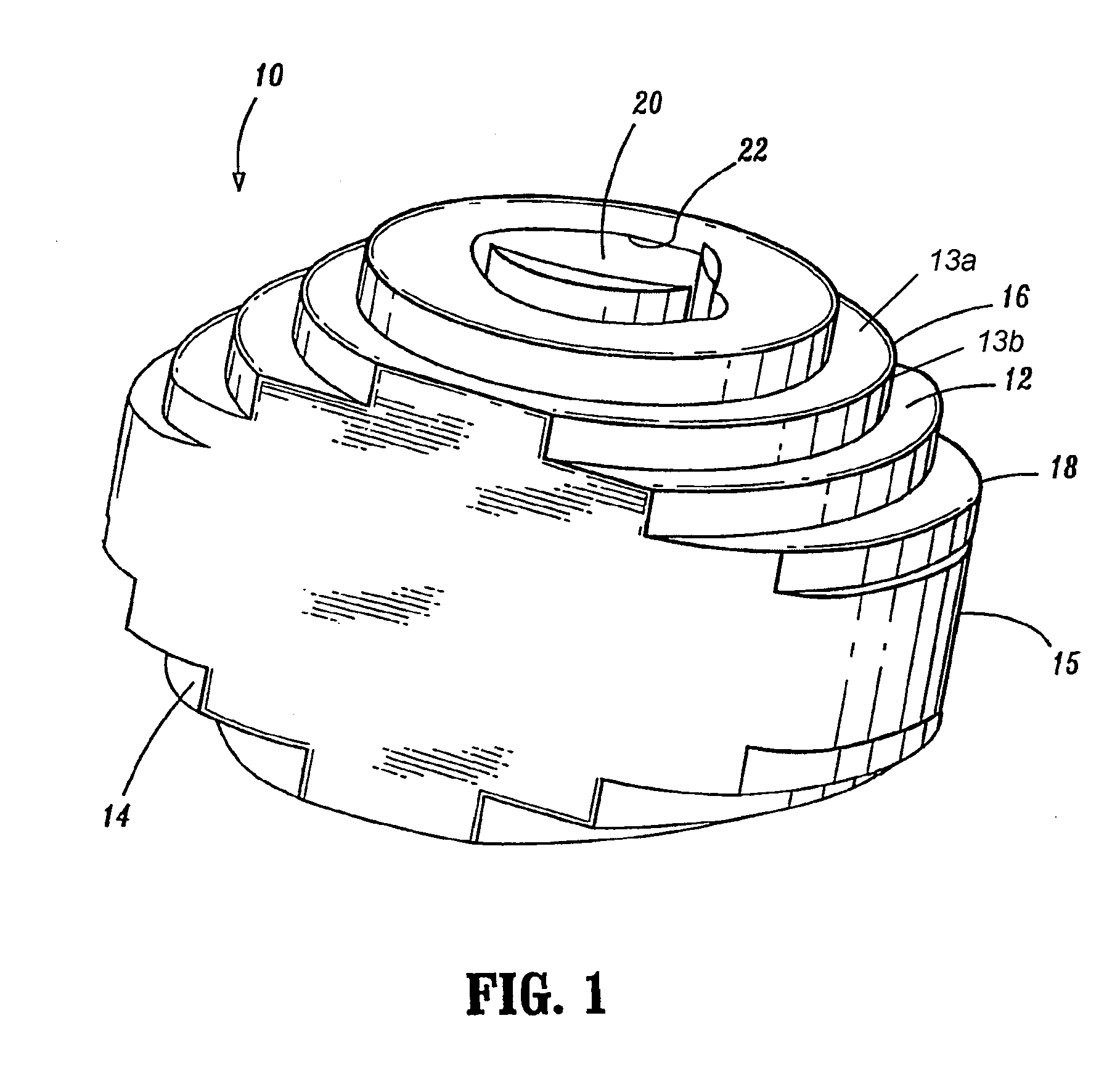Intervertebral implants
a technology of intervertebral implants and implants, which is applied in the field of biocompatible implants, can solve the problems of limiting the size of implants which can be formed from bone, the specific size of implants required for surgical procedures will not be known to any certainty, and the difficulty in adapting implants to meet the size requirements
- Summary
- Abstract
- Description
- Claims
- Application Information
AI Technical Summary
Benefits of technology
Problems solved by technology
Method used
Image
Examples
Embodiment Construction
[0047]Preferred embodiments of the presently disclosed intervertebral implant and implant extender will now be described in detail with reference to the drawings in which like reference numerals designate identical or corresponding elements in each of the several views.
[0048]FIGS. 1-5 illustrate a preferred embodiment of the presently disclosed intervertebral implant shown generally as 10. Briefly, implant 10 includes an upper surface 12, a lower surface 14 and a sidewall 15 positioned between the upper and lower surfaces. Upper and lower surfaces 12 and 14 each include a series of circular steps 16 which move upwardly from the outer periphery 18 of implant 10 to the center 20 of implant 10. The steps 16 include a first plane 13a and a second plane 13b. The first plane 13a is defined by the crest portion of the curvilinear projection or step 16. As shown, the plane 13a may be generally flat. In some embodiments, the first plane 13a and second plane 13b may make a tapered configurati...
PUM
 Login to View More
Login to View More Abstract
Description
Claims
Application Information
 Login to View More
Login to View More - R&D
- Intellectual Property
- Life Sciences
- Materials
- Tech Scout
- Unparalleled Data Quality
- Higher Quality Content
- 60% Fewer Hallucinations
Browse by: Latest US Patents, China's latest patents, Technical Efficacy Thesaurus, Application Domain, Technology Topic, Popular Technical Reports.
© 2025 PatSnap. All rights reserved.Legal|Privacy policy|Modern Slavery Act Transparency Statement|Sitemap|About US| Contact US: help@patsnap.com



